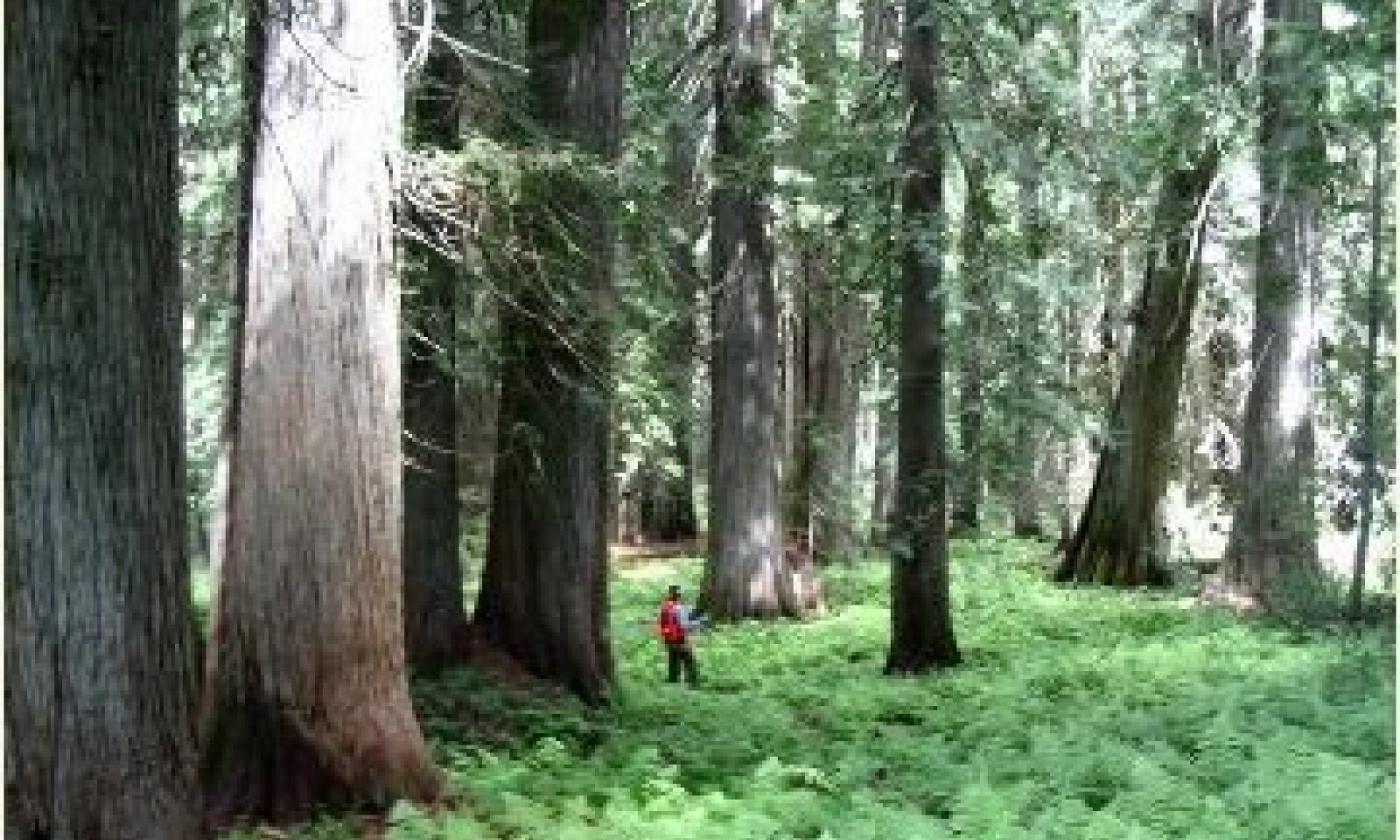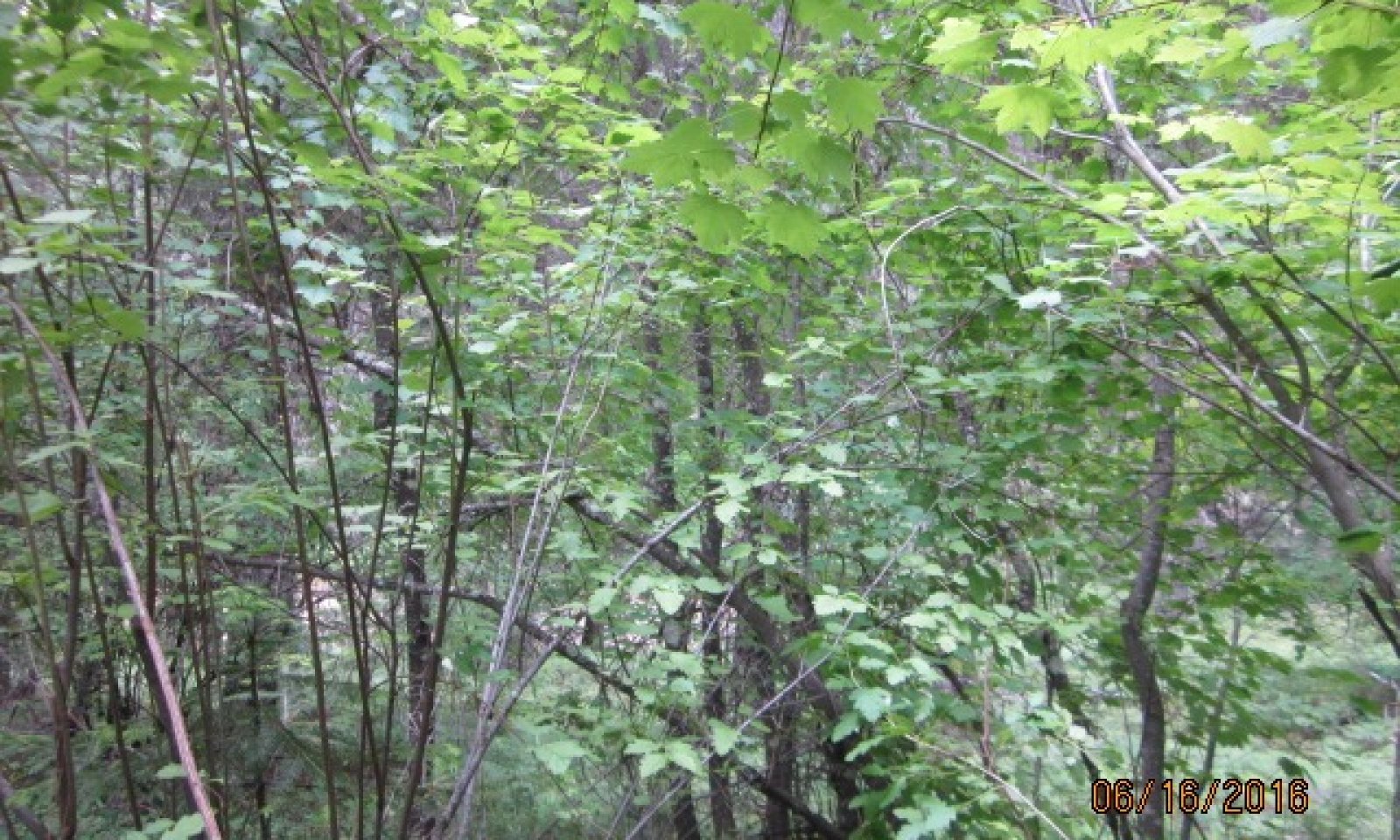
Vitrandic Fragipan Hills 30-45" PZ Frigid Western Bitterroot Foothills
Scenario model
Current ecosystem state
Select a state
Management practices/drivers
Select a transition or restoration pathway
- Transition T1A More details
- Restoration pathway R2A More details
-
No transition or restoration pathway between the selected states has been described
Target ecosystem state
Select a state
Description
This state with extended fire intervals turns into an all aged western redcedar stand with some grand fir present. Most understory regeneration is western redcedar again with some grand fir. Stand replacing fires start off in the herb/shrub stage with many species of shrubs potentially occupying the site. Shrubs include Douglas maple, serviceberry, snowbrush ceanothus, redstem ceanothus, snowberry, and ninebark. Tree regeneration is variable depending on available seed source. A host of seral species can establish including western larch, Douglas-fir, ponderosa pine, lodgepole pine, and western white pine (limited due to blister rust). Cedar and grand fir can also establish, but will sit underneath the seral species until released. Severe fires can cause soil degradation causing sites to remain in shrubs for long periods preventing tree establishment. With successful tree regeneration a mix of seral tree species can occupy the stand or in some cases, a single species like western larch will dominate the stand. These stands go into the stem exclusion phase with tree to tree competition. Understory vegetation will be sparse. As these stands mature mixed severity fires create a mosaic of stand structure and species composition with a combination of seral species and shade tolerant cedar and grand fir.
Sites on midslopes are more likely to burn more intensely than lower slopes due to a “thermal belt” condition with lower slopes being cooler and midslopes warmer and drier in summer conditions.
Submodel
Description
Severe fires change reference state to a shrubfield site. No tree regeneration due to shrub competition and soil conditions. Major shrubs include snowbrush and redstem ceanothus, serviceberry, ninebark, Scouler willow, elderberry species, snowberry, spirea, and Douglas maple
Submodel
Mechanism
Severe fires creating shrubfields preventing tree establishment for long time periods.
Model keys
Briefcase
Add ecological sites and Major Land Resource Areas to your briefcase by clicking on the briefcase (![]() ) icon wherever it occurs. Drag and drop items to reorder. Cookies are used to store briefcase items between browsing sessions. Because of this, the number of items that can be added to your briefcase is limited, and briefcase items added on one device and browser cannot be accessed from another device or browser. Users who do not wish to place cookies on their devices should not use the briefcase tool. Briefcase cookies serve no other purpose than described here and are deleted whenever browsing history is cleared.
) icon wherever it occurs. Drag and drop items to reorder. Cookies are used to store briefcase items between browsing sessions. Because of this, the number of items that can be added to your briefcase is limited, and briefcase items added on one device and browser cannot be accessed from another device or browser. Users who do not wish to place cookies on their devices should not use the briefcase tool. Briefcase cookies serve no other purpose than described here and are deleted whenever browsing history is cleared.
Ecological sites
Major Land Resource Areas
The Ecosystem Dynamics Interpretive Tool is an information system framework developed by the USDA-ARS Jornada Experimental Range, USDA Natural Resources Conservation Service, and New Mexico State University.


